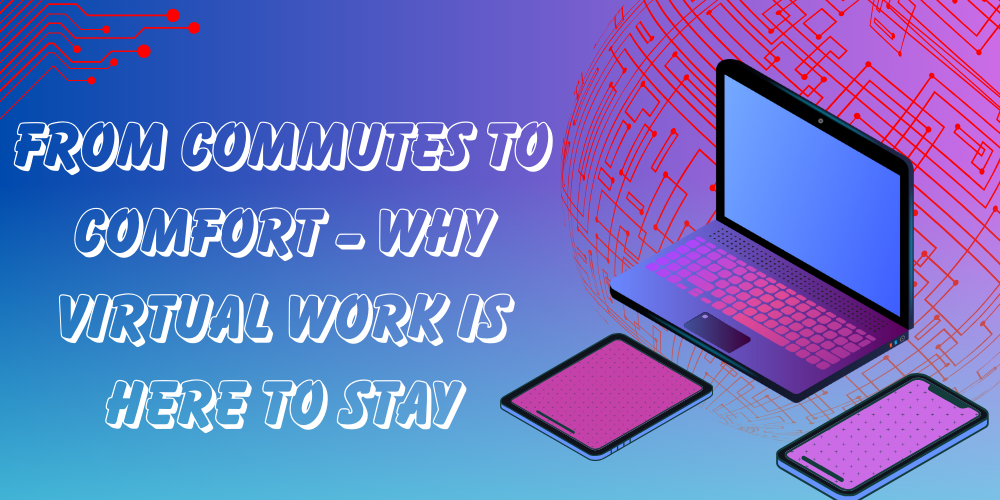
A notable change that is gaining a lot of traction in today’s world of work is the evolution from physical offices to online work settings. Remote work is gaining ground and changing our view of professional life, turning common sense on its head, putting an end to the routine of daily commute, and giving birth to a new concept of workplace convenience. The reason for discussing why you shouldn’t consider virtual work as just a temporary trend, but rather view it as a fundamental shift in our mode of operations.
One of the most important gains of virtual work is that it does away with the daily drive. Traffic hours or overcrowded public transportation is no more. The time can now be recovered and directed to worthwhile use. Such a new time does not only remove the stress but also improve the balance of work and life.
Employees find out that the commuting hour saved can be used to do something productive such as improve themselves, attend to their families, or even get an extra slumber.
The traditional nine-to-five mold of the workday is broken by virtual work. The employees are not tied to any strict schedule but are given the authority to organize their work timings according to their varying productivity peaks.
Job flexibility increases job satisfaction as well as increases the efficiency of motivated employees. Working when one is most productive results in higher quality of output, as well as higher job satisfaction.
The current virtual work is transcending geographical constraints. Companies do not have to be restricted within the confines of physical proximity as they now tap into the global talent pool. This shift allows teamwork collaboration and a diverse team that consists of people from diverse cultures, backgrounds, and time zones. A virtual work provides a borderless workforce that encourages creativity and innovation, by merging diverse perspectives.
Technology advancement made virtual work to be not only possible but also easy and convenient. Thus, video conferencing, collaborative tools, and cloud-based platforms are now integral parts of the virtual work ecosystem. However, working remotely is not only a substitute for being physical but sometimes even better because of the ease with which teams can connect, communicate, and collaborate virtually.
Commuting is also reduced thus decreasing the traffic jams and congestion in public transit systems. This leads to a decrease in CO2 emissions and a clean environment through green earth. Businesses that work at home show social responsibility through their involvement in programs intended to minimize carbon emissions.
The use of a virtual work model, which is environmentally friendly is becoming a socially responsible option for business owners due to increased public consciousness about environment preservation.
Virtual work, however, is more than easy; it is also a policy of putting employees first. Remote work gives people a chance to design workspaces that suit themselves. These newly gained control over working conditions lead to sound mental well-being, lowered stress, and an opportunity to make decisions. Companies that value their employees’ health are probably going to witness higher loyalty, better satisfaction, and greater overall performance.
In terms of corporate, going virtual translates into major cost savings. Working from home reduces the need for huge office spaces that are costly in terms of utilities, maintenance, and rental of office space. Also, corporations have the opportunity to utilize an overseas labor force, which may be more competent and less expensive compared to the domestic workforce. Virtual work also creates immediate and sustainable financial benefits.
To sum up, the shift from commuting to comfort in virtual work is another way of doing things. It is an amalgamation of technological progress, altering work ethos, and employee health appreciation. It’s clear that virtual work doesn’t only arise as a temporary reaction to the global crisis but it is rather a permanent transformation that adds comfort, flexibility, and effectiveness to the employer-worker’s relationship. In other words, virtuality is not an alternative in the world of work today but rather a strategic necessity as we go into the future of work.
back to blog listing